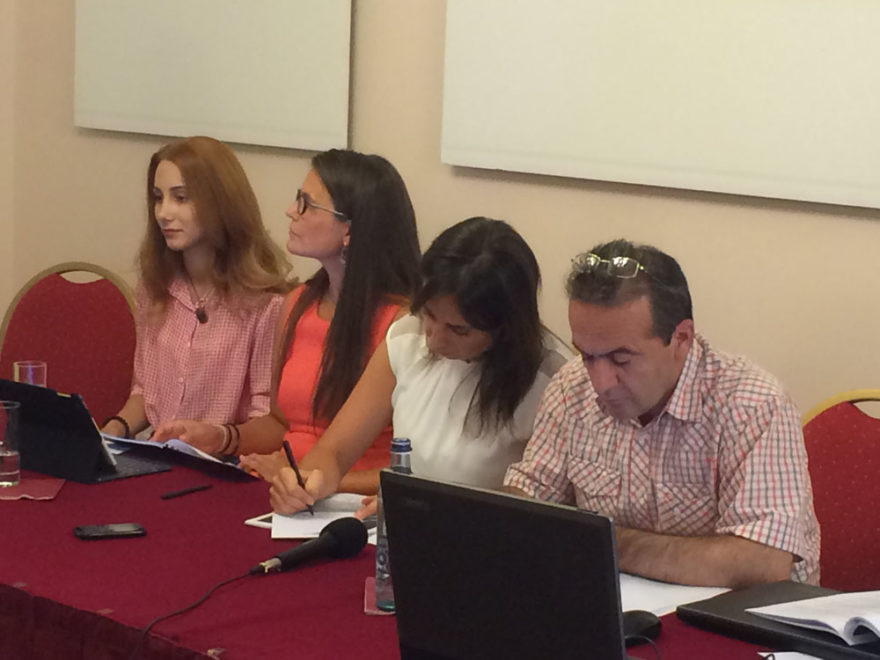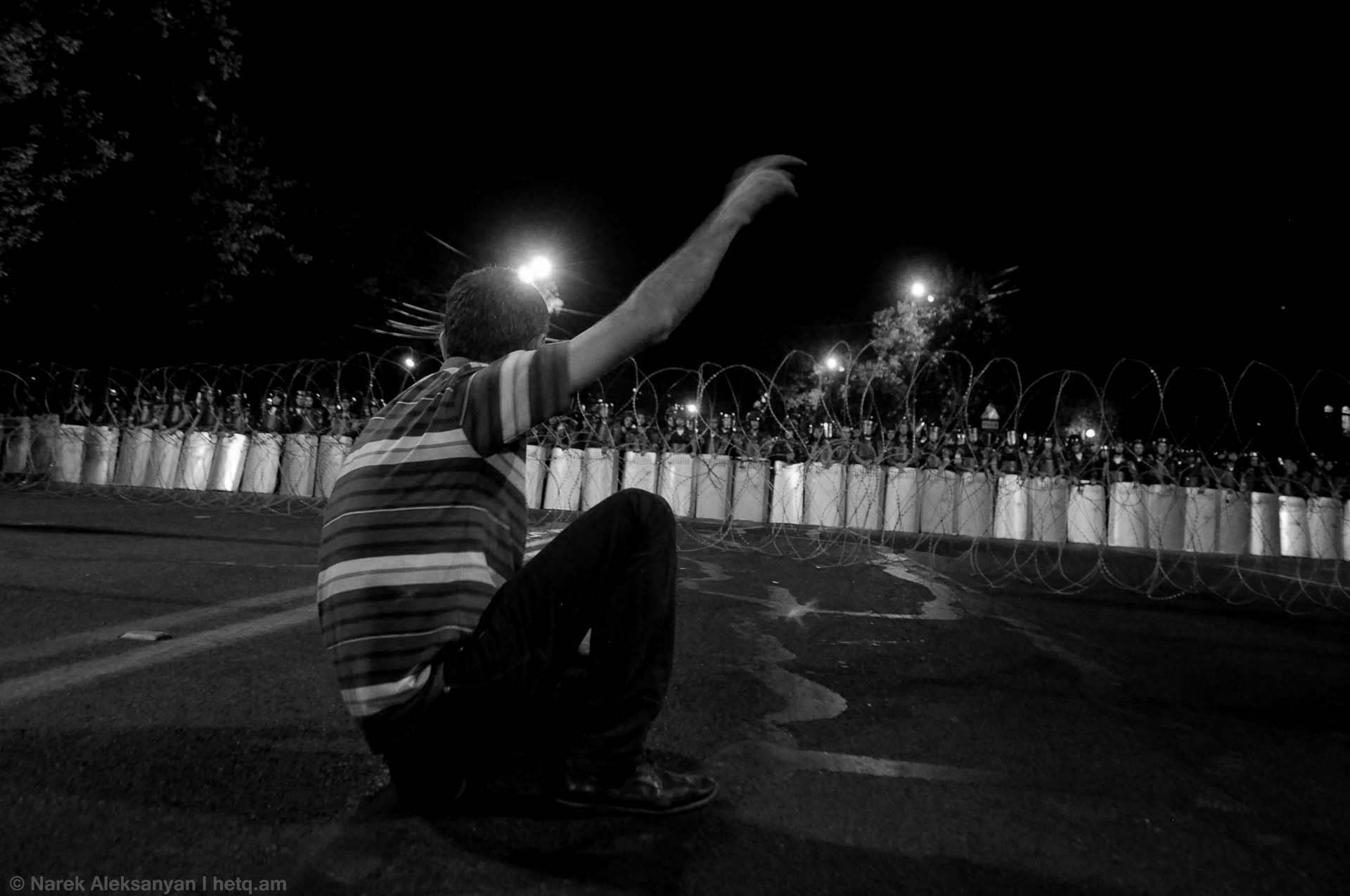– The situation described in the report is symptomatic for the precarious situation in Armenia over the last years, says Armenia Senior Advisor in the Norwegian Helsinki Committee, Lene Wetteland, who was part of the fact finding mission. – The deep distrust in political processes and law enforcement was fuelled by excessive use of force and will only continue to grow unless the Armenian authorities now take significant steps to investigate and prosecute those responsible.

In the early hours of Sunday 17 July, armed members of the protest group Sasna Tsrer broke through the gates of the Patrol Service Regiment of the Police in the Yerevan suburb Erebuni with a truck. In the ensuing struggle, one police colonel died and several officers were injured. The group took seven police officers hostage and circulated statements with their demands in social media; the release of the recently arrested leader of Founding Parliament Jirair Sefilyan and other political prisoners, and the resignation of President Serge Sargsyan. A few days later another police officer was shot dead, and the group took ambulance staff hostage after the police hostages were released. On 30 July they surrendered to the police.
The violent attack and resulting siege represented a dramatic violation of Armenian law, and Sasna Tsrer was almost unanimously condemned in Armenia and abroad. The incident should be thoroughly investigated and those responsible held accountable. When responding to the crisis, however, the authorities too need to react in accordance with the law and Armenia’s human rights obligations.
The hostage stand-off lasted for two weeks and an increasing number of protesters started gathering in the centre of Yerevan, frustrated with the development in the country in general and angered by the handling of the hostage situation. According to witnesses, lawyers and victims interviewed for the report, the police detained a large number of protesters and even passers-by and relatives throughout the period. Some detainees were kept for 5-15 hours without being informed of the reasons for their detention or their status, and in many cases their right to a lawyer was restricted. During detention some persons were severely beaten, access to toilet and water was restricted, and some were denied medical attention in the police station.
On Khorenatsi Street on 20 July and in Sari-Tagh region on 29 July in particular, the police used excessive force against the protesters and did not distinguish between peaceful and aggressive participants. Unidentified individuals in civilian clothes beat and detained protesters, and the police implemented non-lethal weapons that in some cases resulted in severe injuries. Protesters sustained fractures to noses, jaws and ribs, skin burns and leg injuries. In one case a 16-year-old child lost an eye as a result of a stun-gun injury, other participants sustained second-degree burns from stun grenades.
Although media initially mostly enjoyed adequate working conditions, and live streaming took place, journalists seemed to be particularly targeted on 29 July. Equipment was broken, live streaming hindered, and journalists were hospitalized after severe beating.
–The report describes in detail excessive use of force by police and sets forward concrete recommendations that we look forward to discussing with the Armenian authorities this week, says Wetteland from the launch in Yerevan.
Background
The 17 July attack was not the first time members of the group Sasna Tsrer had made political statements in the more political format of “New Armenia” or “Founding Parliament”. Over the last months they have initiated numerous protests, demonstrations and statements urging a change of government, but without major public support despite being decorated veterans from the Nagorno Karabakh war. Moreover, the group’s members have repeatedly been apprehended by the police. While some were released, others are on the Norwegian Helsinki Committee’s list of political prisoners in Armenia. Still, they were considered more as a marginal nationalist group than political opposition with the general public.
The armed attack on the police station was initially not supported by many. Armenians might sympathise with the cause, in particular after they felt a lack of international understanding and sympathy following the 4-day war in Nagorno Karabakh in April 2016 and rumours that President Sargsyan would make substantial territorial concessions in the region in the near future, but they did not support the method. However, after the police in the following days started rounding up not only direct affiliates of the Sasna Tsrer and Founding Parliament, but also supporters and eventually human rights activists, journalists and regular citizens as well, support for the action increased, fuelled by dissatisfaction with an abusive police force and security services. The groups gathering in support of the Sasna Tsrer increased in numbers and an increased level of support remains to this day even if the demonstrations have halted.
Despite a certain recent increase in activism and protest in Armenia over the last years, in particular the Electric Yerevan protests in June 2015, the memory of 1 March 2008 is still alive in people’s memories. Following the Presidential elections in February 2008 where Serge Sargsyan became President, wide protest broke out due to widespread election fraud. After days of sit-in demonstration in the central Liberty Square, police dispersed the camp in the early hours of 1 March 2008. Throughout the day large crowds gathered, and by next morning ten persons had been killed, tens hospitalized and imprisoned.
The trials that followed were criticized by international organisations, including the OSCE/ODIHR. To this day, it is not clear who was responsible for the wide police abuse and deaths of eight civilians and two police officers. The lacking investigation and the impunity for those in charge reminds the Armenians what the authorities are capable of and serves as an additional limitation for protest also today. Moreover, the space for expression of alternative opinions has decreased steadily since then, adding to a sense of desperation that creates space for support to more radical measures.
